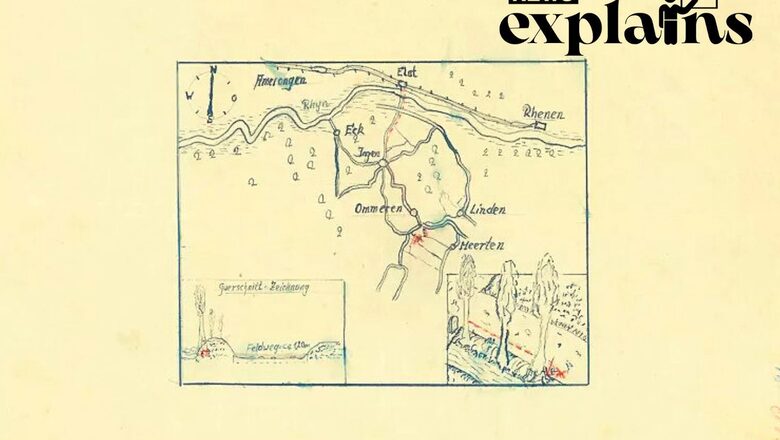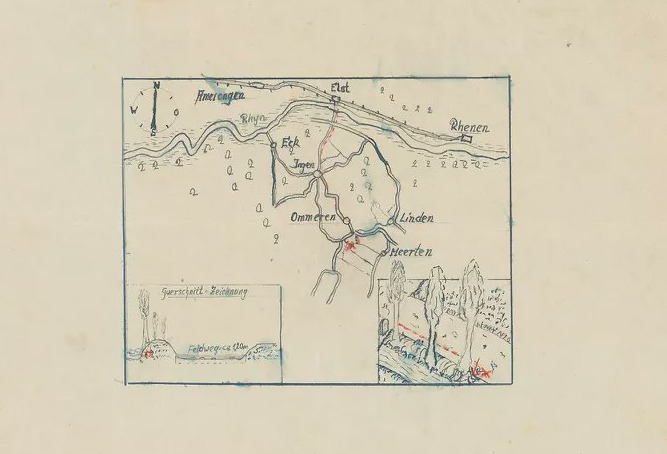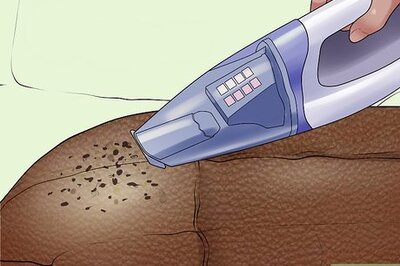
views
Treasure hunts involving long-lost riches have dotted our imaginations since we were children. But a very real chase was sparked after the Netherlands released a ‘lost map’. And now people are looking to find a hoard of riches, buried ages ago by a group of Nazis.
What is this ‘Nazi Treasure’ in the News?
During the final days of World War II, as the Nazis fled occupied Europe, four German soldiers buried a hoard of gold coins and jewels in the Dutch countryside.
Now, the National Archives of the Netherlands has released a trove of documents – and a map to the treasure where X marks the spot – nearly 80 years later, raising hopes of finding the buried loot, the Guardian reported.
What Does the Treasure Trove Have in It?
The treasure, which consisted of four ammunition cases stuffed with coins, watches, jewellery, diamonds, and other gemstones, is estimated to be worth at least 2 million or 3 million Dutch guilders in 1945, or around £15.85 million in today’s money.

“A lot of researchers, journalists, and amateur archaeologists are really interested and excited,” Annet Waalkens, an adviser at the National Archives, which released over 1,300 historical documents last week, told the Observer.
It remains to be seen whether any would-be treasure hunter will be able to locate the cases. Among the cache of Second World War papers was a 7cm-thick file that detailed the Dutch state’s futile efforts to recover the looted Nazi treasure after the war.
A Look at the Interesting History Around the Incident
Researchers believe the treasure was buried in April 1945, just as the Allies were about to liberate Arnhem in the east of the Netherlands. German troops were fleeing. “They decide to bury the treasure because it’s just getting a little too hot under their feet and they’re scared,” Waalkens explained to the Observer.
The valuable cargo was buried 70-80cm deep in the roots of a poplar tree just outside the village of Ommeren, about 25 miles from Arnhem. The loot might have vanished from history had it not been for a chatty German soldier, Helmut S, who was not one of the original looters but assisted in the burial.
Helmut S, born in 1925, may still be alive, according to the National Archives, but no one has been able to locate him. Two of the other soldiers died in the war, and the third simply vanished.
Talking about this mysterious Helmut S, Waalkens said “he was a bit loose-lipped back in Berlin.” He quickly caught the eye of Dutch authorities in the occupied German city. They forwarded the information to the Beheersinstituut, the Dutch Institute of Asset and Property Management, which is in charge of managing the wealth of people who went missing during WWII, including deported Jews, Dutch spies, and German citizens living in the Netherlands.
According to Helmut S, the hoard was discovered when a Rotterdamsche bank branch in Arnhem was bombed in August 1944. A safe was smashed, scattering jewels, coins, and other valuables across the street. His comrades took what they could see and hid it in zinc ammunition boxes.
The Beheersinstitut conducted three searches in 1946-47. The first attempt failed due to frozen ground. The second, using primitive metal detectors from the time, produced nothing. The third attempt brought Helmut S back from Germany to assist, but despite his eyewitness knowledge and the map he had provided, the dig was futile.
Who Created This Map?
The map’s creator is unknown, but archivists believe it was created by one of the German soldiers. The map was placed in the Beheersinstituut’s file after Helmut S handed it over, with the proviso that it would not be released for many years to protect the financial interests of the property owners, the report said.
Several theories were floated by Dutch officials. Perhaps the treasure was discovered by a local witnessing the burial or by the mysterious surviving German soldier. Others were suspicious of the Americans. Beheersinstituut staff encountered two American officers during the third dig and noticed that the soil in the area had been disturbed.
According to Joost Rosendaal, an assistant professor of history at Radboud University in Nijmegen, looting was common on both sides. German soldiers looted at least five banks in Arnhem in October 1944. Another was robbed by troops in British uniforms after the liberation in April 1945, a group that included one Dutchman serving in the South Wales Borderers.
Helmut S, according to the historian, got some facts wrong. Helmut’s story about his comrades finding the jewels in the street after a bank was bombed in August 1944 “can’t be true,” Rosendaal said, because Arnhem was not bombed that month.
The Allies did not attempt to take Arnhem until September, in the disastrous Operation Market Garden. Field Marshal Bernard Montgomery’s reckless gamble to break through to Germany cost many lives and was later dramatised in the 1977 film A Bridge Too Far.
Rosendaal thinks it likely the other soldiers stole the jewels in November 1944 when German forces set fire to Arnhem’s Rotterdamsche bank, with the blaze intended to “hide the robbing of the bank”.
Could the Treasure Actually be Found?
The historian is sceptical that the treasure will ever be discovered. The Royal Air Force heavily bombed the area around Ommeren on the night of April 24, 1945. He believes the hiding place was “destroyed by this bombardment,” allowing the treasure to be discovered by locals or Allied troops, or that the Germans took it to another location.
The Dutch archive team is more optimistic now that the map is available online and in person at the Hague, alongside other papers from its 142km-long collection. “I sincerely hope it’s still there,” Waalkens said. “And that when it’s dug up, we might be able to find some of the rightful owners.”
Read all the Latest Explainers here



















Comments
0 comment